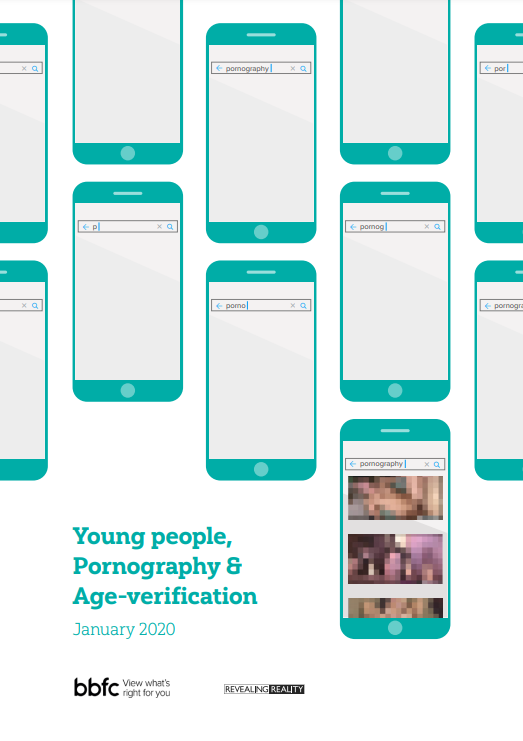We all know that as young people move through their teenage years, their curiosity about sex deepens. And although perhaps not easy to admit—especially for those of us with children of our own—we also know that online pornography is a popular medium via which they explore sex, sexuality and intimacy.
But with smartphones—nearly ubiquitous even among children at a primary school age—providing a private portal into the online world, adults are left in the dark about what kind of explicit content young people are now seeing.
The British Board of Film Classification (BBFC) commissioned us to shine a light on the experiences of young people, exploring their interactions with, and attitudes towards, pornography as they grew up. This research should serve to establish a benchmark against which the impact and effectiveness of any future regulation or online harms interventions in the UK can be measured.
1.Children didn’t only watch porn for sexual gratification
While both boys and girls were using pornography for sexual gratification during their teen years, one of our more revealing findings was the use of porn to ‘learn’ about sex. Lots of young people felt that sex education at school did not adequately prepare them for sex, and so they were using porn to understand the specifics of ‘what to do’. For LGB respondents in particular, it was also used to explore their sexuality.
2. Porn affected young people’s expectations and experiences of sex
Many young people felt porn had impacted on either their or their partners attitudes and behaviours during sex, and some felt it fostered both unrealistic expectations and unwanted behaviours. Some young people told us their partners had tried to enact some of the more aggressive or violent things they had seen online. Others thought they had learnt useful tips from porn, however children may find it hard to understand what could potentially be harmful.
3. Parents significantly under-estimated how much porn children saw, particularly when it came to their daughters.
In our survey three-quarters of parents (75%) felt their child would not have seen pornography online. However, among the children of those parents, 53% said they had. This includes children as young as 11, however far fewer younger children had seen porn while a larger proportion of older teenagers had. Parents were particularly adamant that their daughters would not be watching porn, yet the majority of girls we spoke to had actively sought out pornographic content online for both gratification and to learn about sex.
Children and the online world
Like adults, if children want to know something, they just google it. The online world is where children explore their sexuality and where they can ask the questions they’re too embarrassed to ask their parents or friends: for example, one girl we interviewed wanted to know if stretch marks were “normal”, and felt reassured when she saw them in a pornography video.
The truth is that children’s curiosity to watch porn is understandable, and with widespread access to the internet, it’s becoming more accessible. We shouldn’t therefore be surprised that children both stumble across and actively seek out porn. It does of course expose them to sexual, and sexually violent, content, and no parent would want their children to see that. But it’s also providing the answers, for good or bad, to questions they feel they aren’t able to get anywhere else.
Sex education classes have shown themselves to be deficient when it comes to children understanding how to have sex. Blocking the ability for minors to access violent or degrading porn is one way to help them reframe how they view sex and intimacy, but porn will always be there. Another is to open up a more considered conversation around sex and porn so children are better equipped to make judgements on what they see and how to interpret it.
You can read the full report here

